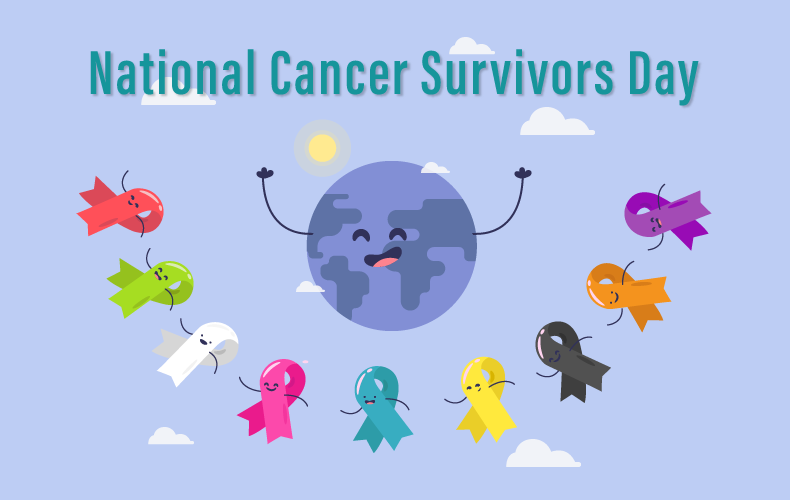
National Cancer Survivor’s Day is an annual celebration of cancer survivors held on the first Sunday in June. It serves as a source of inspiration for people recently diagnosed with cancer and helps to raise money for cancer research. The event also provides support to the families of cancer sufferers as well as community outreach.
There are many events held around the world for National Cancer Survivor’s day, ranging from BBQs through to art shows. The day is also used to inform cancer sufferers and their families of the latest cancer treatments and research that is being performed.
A significant amount of cancer research is focused on umbilical cord stem cells. They are powerful cells that are found in umbilical cord blood. Umbilical cord stem cells are used to treat many types of cancer, blood disorders, and immune system disorders. This article will focus on ways that stem cells are used to treat cancer and some stem cell cancer treatments that are currently being researched.
The discovery of cord blood stem cells
Stem cells were first discovered 110 years ago by a Russian histologist named Alexander Maksimov. Maksimov found that these microscopic cells were somehow responsible for creating red blood cells. By 1963, scientists had discovered that hematopoietic stem cells (HSCs) in the bone marrow were differentiating into both red and white blood cells.
Researchers quickly realised that a transplant of HSC’s might be able to restore a person’s ability to produce healthy blood cells. This was particularly useful for medical conditions where the blood cells being created were cancerous or malformed. In 1956, doctors successfully used a bone marrow transplant to cure a person of leukaemia.
In 1974, researchers discovered stem cells and progenitor cells in human cord blood. This gave them another source of stem cells to use for research. In 1982, Dr Hal Broxmeyer, Edward A. Boyse and Judith Bard, Boyse had a discussion about umbilical cord stem cells being wasted because cord blood was usually discarded by hospitals.
This meeting led to the creation of the world’s first umbilical cord blood company, Biocyte. It also encouraged doctors and researchers to treat cord blood as the valuable resource that it is.
The first successful transplant using umbilical cord stem cells took place in 1988. A young boy with Fanconi Anaemia received a transplant of his sister’s umbilical cord blood (Gluckman & Rocha, 2005).
Using umbilical cord stem cells to treat cancer
The hematopoietic stem cells found in bone marrow and umbilical cord blood have been used to treat different types of blood cancer for many years. Doctors have successfully cured patients of many types of blood cancers with the help of HSCs, including multiple forms of lymphoma, leukaemia, and myeloma.
Most treatment protocols involve the patient receiving a high dose of radiotherapy or chemotherapy. This destroys the cancerous cells in the patients blood and bone marrow. This is followed up with a transplant of HSCs to restore the patient’s ability to generate healthy blood cells.
Patients can receive a transplant of umbilical cord stem cells from any person that is a Human leukocyte antigen (HLA) match. HLA is a protein that tells the human body if a cell is foreign or a natural part of the body. If a cell is not a HLA match, the body’s immune system will reject it.
By the end of 2012, more than 35,000 cord blood transplants had taken place worldwide (Aldenhoven & Kurtzberg, 2015). The majority of these transplants were performed to treat patients with blood cancer.
What will the future hold for umbilical cord stem cells?
Stem cell research continues to move at a very fast pace. Some recent research projects involving cancer and stem cells include:
Modified stem cells being used to deliver chemotherapy to tumours
In 2017, researchers from the University of California, Irvine, discovered a way to use genetically modified stem cells to deliver chemotherapy directly to metastatic tumours. This discovery may help scientists use stem cells to treat additional types of cancer including breast cancer and prostate cancer. Read more
Stem cells may be useful for prostate cancer not responding to hormone therapy
A new trial funded by NHS is looking at the use of stem cells for treating patients with prostate cancer that is not responding to hormone therapy. The scientists will boost stem cell production to help the body tolerate higher doses of a chemotherapy drug called melphalan. Read more
Using cord blood stem cells to control lung cancer
Researchers are testing the ability of Mesenchymal Stem Cells (MSCs) obtained from cord blood to control the growth of lung cancer cells. They suspect that the MSCs may slow the growth rate of cancer cells substantially. Read more
All of these research projects could lead to trials in the future that eventually result in new cancer treatments.
Sources
H E Broxmeyer, E. (1989). Human umbilical cord blood as a potential source of transplantable hematopoietic stem/progenitor cells. Proceedings Of The National Academy Of Sciences Of The United States Of America, 86(10), 3828. Retrieved from ncbi.nlm.nih.gov/pmc/articles/PMC287234/
Gluckman, E., & Rocha, V. (2005). History of the clinical use of umbilical cord blood hematopoietic cells. Cytotherapy, 7(3), 219-227. doi:10.1080/14653240510027136
Aldenhoven, M. & Kurtzberg, J. (2015). Cord blood is the optimal graft source for the treatment of pediatric patients with lysosomal storage diseases: clinical outcomes and future directions. Cytotherapy, 17(6), 765-774. http://dx.doi.org/10.1016/j.jcyt.2015.03.609
{{cta(‘f7389741-26c1-44fd-b68c-b354e8c50c0e’)}}


